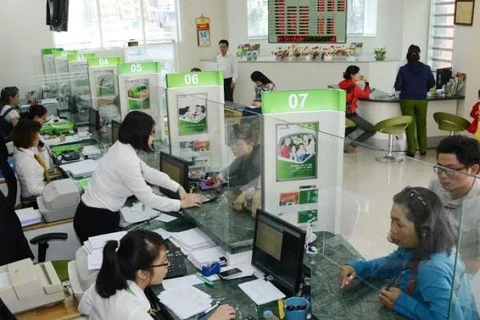Hanoi (VNA) - Hanoi maintained second place among Vietnam’s 63 centrally-run cities and provinces in the Public Administration Reform (PAR) Index 2019, which the city’s leader attributed to firm moves made over recent years.
Chairman of the Hanoi People’s Committee Nguyen Duc Chung said the capital has taken drastic actions to implement the Government’s administrative reform plan for 2016-2020 and local reform programmes, in the process meeting a number of criteria ahead of the deadlines set by the Government in Resolution No 30c/NQ-CP.
The city has established and publicised 1,717 internal processes for completing administrative procedures on the People’s Committee’s portal and at offices for receiving and handling procedures of departments and agencies and district- and communal-level people’s committees.
All administrative procedures within the remit of Hanoi’s agencies have been received and returned at their single-window units.
The city has simplified 481 administrative procedures, for savings to organisations and individuals of more than 91 billion VND (3.9 million USD) annually, cutting settlement time, and raising the rate of dossiers finished on schedule, according to Chung.
In the first quarter of 2020, relevant agencies handled 1.87 million dossiers, over 99.8 percent of which were resolved on schedule. More public services have been provided online at Level-3 and Level-4 – the highest levels.
The settlement of administrative procedures and the provision of public services at all levels in Hanoi have been carried out via the city’s online single-window system and the specialised information systems of the educational and health sectors, Chung said.
Under the Prime Minister’s direction, the capital has connected 48 online public services with the National Public Service Portal, he noted, adding that it is striving to provide another 200 services via the portal by the end of June.
Authorities are pressing on with communications activities to raise public awareness, he went on, assisting residents in certain areas to use public services and sending civil servants and volunteers to provide advice on Level-3 and Level-4 online public services.
In particular, they are providing instructions for Level-3 and Level-4 online public services for high school students, thereby creating a prerequisite for developing e-citizens and a smart city, Chung noted.
The capital surveyed people and businesses’ satisfaction levels with public service provision at 22 city departments and sectors and 30 district-level localities, along with their satisfaction with clean water supply, environmental hygiene, education, and healthcare services.
District-level localities have also organised independent polls to assess satisfaction among the local populace and enterprises with local units that receive administrative procedures and determine outcomes, he added.
The PAR Index and the Satisfaction Index of Public Administration Services (SIPAS) were released at a teleconference on May 19.
The State Bank of Vietnam (SBV) ranked first in the PAR Index 2019 - the fifth consecutive time the central bank has led ministries and ministerial-level agencies in the rankings.
The northern province of Quang Ninh, meanwhile, topped cities and provinces nationwide in the PAR Index rankings for the third straight time.
With regard to SIPAS, 84.45 percent of respondent people and organisations were satisfied with State administrative agencies’ performance, up nearly 1.5 percent against 2018 and nearly 2.3 percent against 2017.
Of the three administrative levels, the district level received the highest satisfaction rate (85.53 percent) while the provincial level received the lowest (83.35 percent).
Among the 16 service sectors, transport secured the most satisfaction from people and organisations (88.45 percent), while the land and environment sector was at the bottom (79.06 percent).
The SIPAS among the 63 cities and provinces ranged from 73.81 to 95.26 percent, with 41 of them posting higher indexes./.
VNA

























